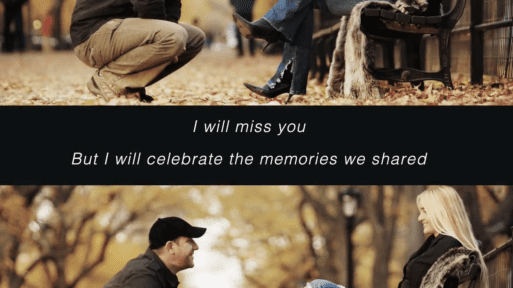 Obituaries and memorial videos are time-honored traditions for honoring those we have lost. It’s natural to want to share the memories and accomplishments of a loved one after they die, but it can also be an emotionally demanding task for survivors to take on in the midst of fresh grief. As cultural attitudes towards death and dying shift, many people are choosing a new approach to remembrance: creating their own memorials as they reach the end of life.
Obituaries and memorial videos are time-honored traditions for honoring those we have lost. It’s natural to want to share the memories and accomplishments of a loved one after they die, but it can also be an emotionally demanding task for survivors to take on in the midst of fresh grief. As cultural attitudes towards death and dying shift, many people are choosing a new approach to remembrance: creating their own memorials as they reach the end of life.
A self-made memorial can be a meaningful way to comfort loved ones with a lasting personal message. Even a few brief paragraphs detailing your own life can offer powerful solace to survivors, because it comes directly from you – a sampling of your own perspective and voice. Or you may opt for a more informal approach, such as a letter or video that directly addresses your loved ones. Either way, it’s an opportunity to ensure that you are remembered on your own terms.
Writing Your Own Obituary
In her op-ed in the New York Times, Indiana University professor emerita Susan Gubar pointed out that writing your own obituary can help loved ones make crucial decisions after you die. It saves friends and family from trying to guess the nuances of our desires: Who should be mentioned in our obituary, and in what order? How should our life accomplishments be prioritized in our memorial? Where would we want donations made in our name?
Many obituaries are essentially lists of key details in a person’s life, for which you may want to refer to a pre-made template. However, writing your own allows you the freedom to structure your obituary however you please. If you enjoy writing creatively or prefer a less formal approach, you may choose to write your obituary more like an open letter or a piece of prose, like Seattle writer Jane Lotter.

A memorial video using special effects of the same image rotating
upward on the top and the bottom.
Credit: screen shot of Mitch Header youtube video
Videos and New Technology
Memorial videos are an increasingly common way to celebrate life, both at funeral services and online. Recording or editing your own video can be an intense and emotional experience, but it provides a unique opportunity to leave behind a piece of yourself, as cancer patient Andy Moss did in the video message played at his funeral.
Taking video technology a step further, tech company Artistry In Motion is working on a hologram program that could be used to create memorial recordings. Posthumous holograms have already made a few notable appearances in popular culture (for instance, Tupac Shakur’s famous hologram at Coachella). While this approach may still be a little too “sci-fi” for some, it shows that new attitudes are developing around remembrance traditions.
Whether through words, video, or futuristic new technology, creating your own memorial can be an empowering and even therapeutic activity. Reflecting on the memorable aspects of your life can inspire gratitude for the past and help bring focus to the present.

 Creating Your Own Obituary or Memorial Video
Creating Your Own Obituary or Memorial Video




 Composting Bodies Is Now Legal in a Dozen States
Composting Bodies Is Now Legal in a Dozen States














